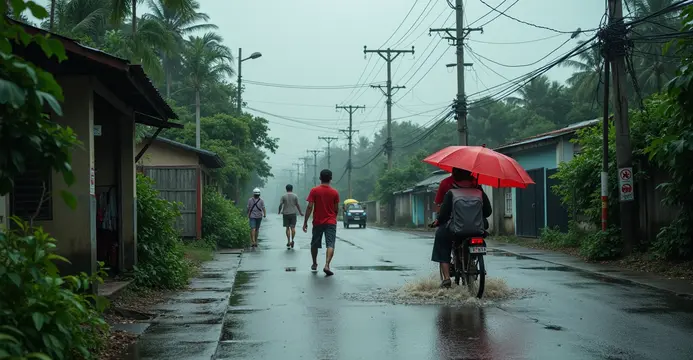
Mass Evacuation Underway in Vietnam
Vietnamese authorities have ordered the evacuation of more than 586,000 residents from coastal provinces as Typhoon Kajiki approaches the country's eastern coastline. The powerful storm is expected to make landfall early Monday morning, bringing potentially catastrophic winds, heavy rainfall, and dangerous storm surges.
Emergency Preparations Intensify
The evacuation order affects residents in the central provinces of Thanh Hoa, Quang Tri, Hue, and Danang. Local authorities have established emergency shelters in schools and public buildings to accommodate evacuees. The Vietnamese military has been mobilized to assist with evacuation efforts and provide emergency response capabilities.
Transportation Disruptions
Vietnam Airlines has canceled at least 22 flights to and from central cities, while Vietjet Aviation has also suspended or delayed numerous flights. Maritime authorities have prohibited all boats from leaving shore in seven coastal provinces, and fishing communities have been instructed to secure their vessels.
Storm Intensity and Projected Impact
According to the Joint Typhoon Warning Center, Typhoon Kajiki is currently moving at speeds of 175 kilometers per hour across the South China Sea. Meteorologists predict the storm could intensify further, with maximum sustained winds reaching 185 kilometers per hour before making landfall.
Regional Weather Warnings
China's southern island province of Hainan is also bracing for impact, with the resort city of Sanya closing tourist attractions, businesses, and public transportation. The Chinese National Meteorological Center has issued red typhoon alerts—the highest warning level—and forecasts rainfall amounts up to 320 millimeters in affected areas.
Historical Context and Climate Concerns
Vietnamese officials have expressed particular concern given the devastating impact of Typhoon Yagi less than a year ago, which killed approximately 300 people and caused $3.3 billion in property damage. Climate scientists note that Vietnam is among the countries most vulnerable to climate change impacts, with increasing frequency and intensity of tropical cyclones.
Long-term Climate Challenges
Vietnam's extensive coastline, dense population in low-lying areas, and geographical location make it particularly susceptible to tropical storms. Research indicates that climate change is contributing to more extreme weather patterns in the region, with rising sea levels exacerbating storm surge risks.

 Nederlands
Nederlands English
English Français
Français Deutsch
Deutsch Español
Español Português
Português






